#nintendo 128
Text
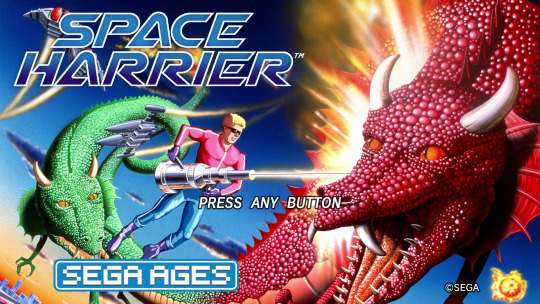
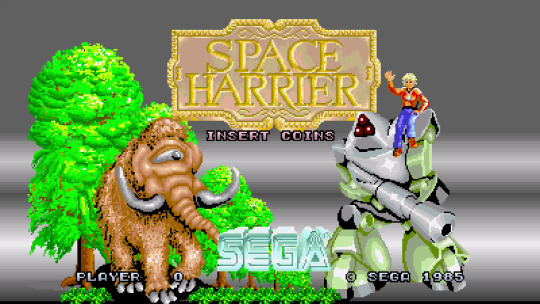
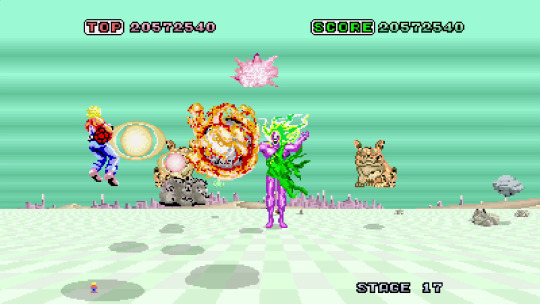
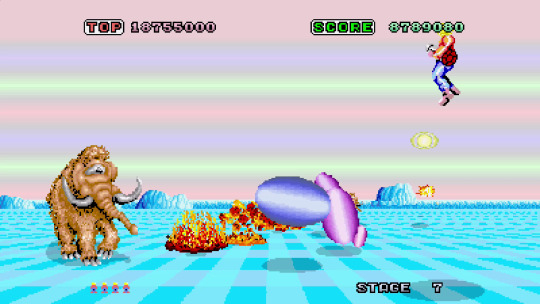
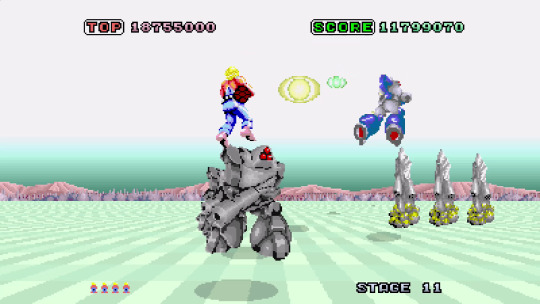


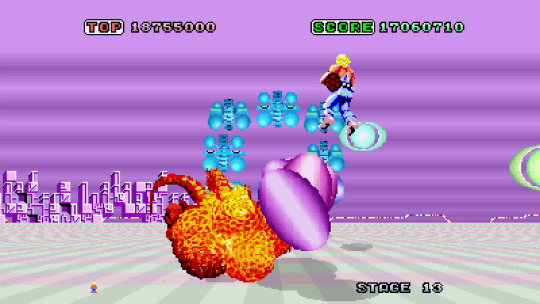

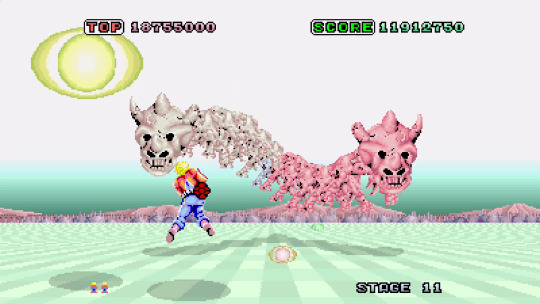



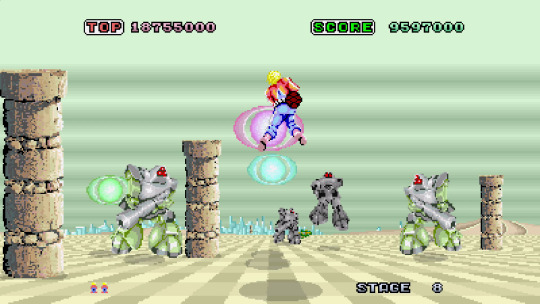

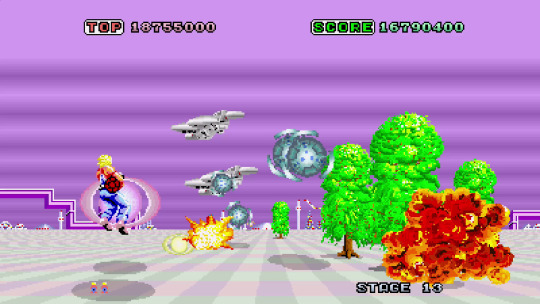
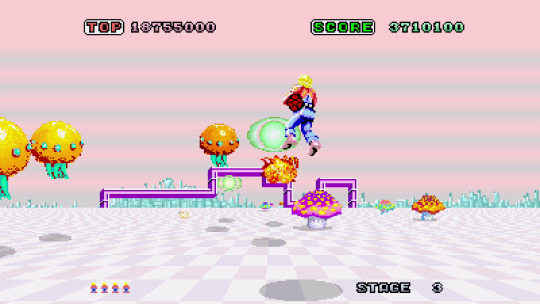
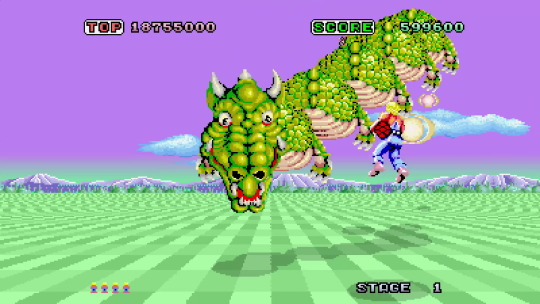
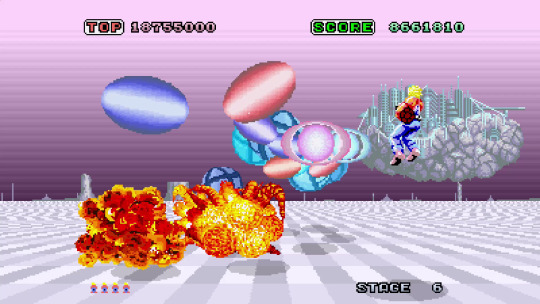
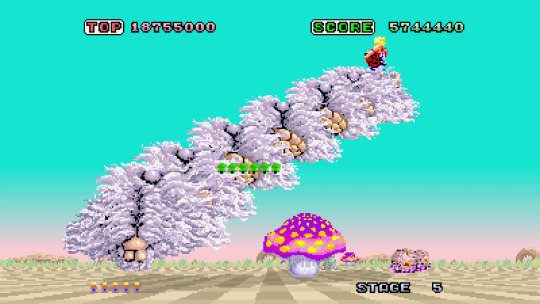

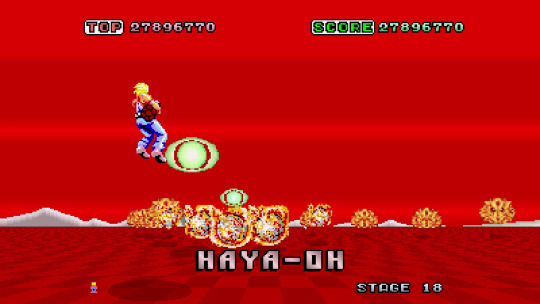
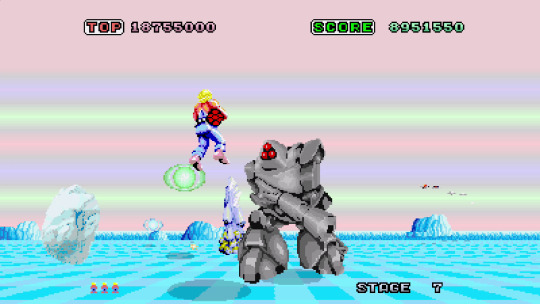
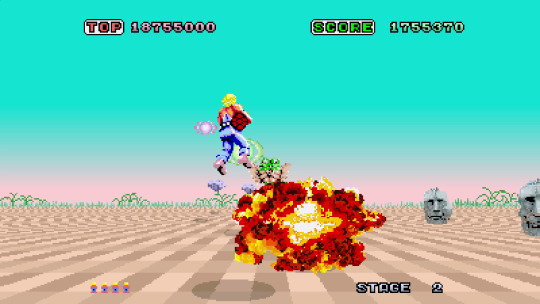

Screenshots from the M2 developed 2019 Nintendo Switch port of the classic SEGA arcade game.
Space Harrier / スペースハリアー
Watch our longplay: https://youtu.be/qvSNIo5f6sE
Follow Randomised Gaming on Tumblr, for video game, art, reviews, features, videos and more. You can also find us on YouTube, Twitch & Twitter for even more gaming & video content! Buy us a tea on Ko-fi
41 notes
·
View notes
Text

Project 128 FINALE:
After almost 5 months, all 128 Marlingtons are finished!
#mario#super mario#super mario bros#nintendo#pixel art#project 128#mayro#flash games#rock mario#super mario galaxy 2#moldy mario
26 notes
·
View notes
Text
Day 128 of drawing every Animal Crossing villager:
I never really liked Knox.
There's just some inexplicable thing that I hate about him.
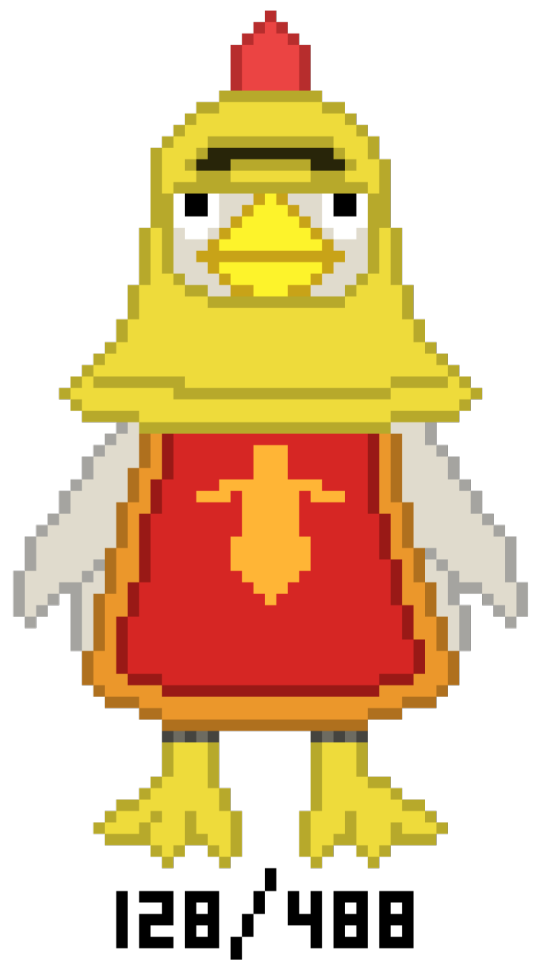
#pixel art#fanart#video games#games#gaming#nintendo#animal crossing#animal crossing new horizons#animal crossing nh#drawing challenge#day 128#knox#chicken
9 notes
·
View notes
Text
going to..try and homebrew my 3ds this week..godspeed to myself
#unrelated but has anyone taken an sd card out of a new3ds? how much care do i need to put into it i dont wanna break her#im homebrewing another ds so i dont fuck them both up lol#got the wrong kind of sd card the first time..lol....i have to go back to the store i think 32 gbs should be enough anyways i tried to get#away with a 128 and even if i reformatted the nintendo site says sdxc arent compatible
6 notes
·
View notes
Text
so Nintendo is sure as hell gonna send Roblox a C&D over all these little Marios running around on Roblox now right? it's like Super Mario 128 in there
85 notes
·
View notes
Text

those motherfuckers at nintendo think they can take down the scans of Nintendo Power off the net archive eh?
Jokes on you, chumps! Torrents are (kinda) forever!!!!
magnet:?xt=urn:btih:8a1a883270f3f094150ce258a26b4ca581839153&dn=nintendo-power-issue-128&tr=http%3a%2f%2fbt1.archive.org%3a6969%2fannounce&tr=http%3a%2f%2fbt2.archive.org%3a6969%2fannounce153
60 notes
·
View notes
Text
i'm just gonna be a hyperfocusing goober for today, so let me have this

so i really like the pikmin games. for the longest time, i was no good at them, because my brain was a disorganized mess. however, by god, i tried, mostly because there is something inherently infectious about the core of this franchise that hits right on a mechanical point, and i mean this about every game (except Hey! Pikmin, because we all kinda quietly agreed we wouldn't talk about that one, which, hey? c'mon. it's good. it's just a weird spin-off.)
so, lemme talk about each game, and how the developer decided to approach each title.
it's a long one, and i don't expect anyone to be, like, hanging on to every word, but I CARE A LOT ABOUT STUFF LIKE THIS OKAY
okay you got warned so here you go:
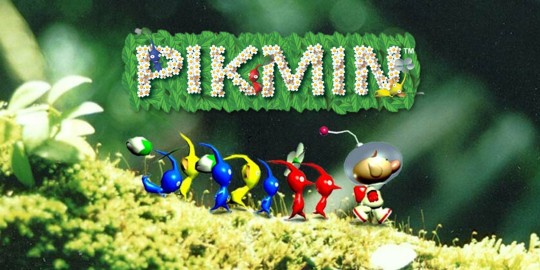
pikmin 1 was a launch-window game that popped in a little under a month after the release of the simultaneously maligned and dearly beloved Gamecube. those of you with a big ol' trivia brain will remember that the old Super Mario 128 rumors, including its tech demo of all the li'l marios running around to show off the Gamecube's processing power, would act as the seed idea for what would eventually become Pikmin: The Game. alongside the bizarre and fun Super Mario Sunshine and Luigi's Mansion, it was one of those games that showcased how early on Nintendo didn't really consider itself in competition with Sony or the newcomer Microsoft, cuz, like, who was making a game like pikmin. nobody in major publishing and development, that's for sure.
it's a simple concept: you're a li'l guy leading 100 li'ler guys around to collect ship parts from your very destroyed spaceship that got you there in the first place. natch, the nature of the world is largely out to kill you and all your diminuitive minions. whereas Overlord would take this concept for the purpose of murdering everything in sight and generally causing chaos (which would itself be the seed idea for a PS Vita game built on the inbetween point of Overlord and Pikmin, and it was aggressively okay), Pikmin was more about structure and strategy and planning and, on occasion, taking a chill moment to build up your numbers to lick your wounds and make up your losses.
taking its camera angle low to the grass to present the mundane as gigantic was an inspired move, clearly showcased by just how lush the world was for its time, and how simple a concept it is to make the everyday seem larger than life and fantastical. y'know, like Honey I Shrunk The Kids, but you're managing a hundred kindergarteners who are all weirdly just obedient enough that you can have 'em fetch stuff for your own singular ends. (who doesn't envy that JUST a little?)
add to that the three different pikmin suited for different situations, and you have a game with some nice, unexpected complexity. your bog-standard rank-and-file red pikmin have the added benefit, apart from being adorable, of being completely and utterly fire resistant, and are the strongest attackers in the game. yellow pikmin have great big ears and are lightning-proofed, alongside being incredibly chuckable, able to reach areas others cannot. blue pikmin, however, can handle water just fine, able to walk underneath as easily as on land. each areas' challenges are built around ensuring you have and use the right pikmin for the job, as sending the wrong pikmin can mean that heart-breaking death rattle that everyone wants to avoid.
the game was notoriously short -- one could spend about eight hours on first play if they figure out the controls and strategies early on -- and so for many, it acted as a neat launch window novelty. for me, the concept carried it for multiple playthrough attempts; as terrible as i was at it, the core mechanics, limited though they were, seemed primed for teasing out a near-limitless well of ideas. and, well, clearly, that novelty continued for many, as it would get a sequel not too terribly long after.
one thing to point out is, with its short length, it actually has an in-game timer -- not just the day cycle, where you gotta get yourself and your li'ler guys aboard your respective ships before sunset, but also a 30-day timer. if you couldn't manage to collect the critical parts in time, it's game over, buddy. try again.
it's semi-roguelite in that way; it was perfectly possible to beef it so terribly that you weren't guaranteed to wind up finishing in time. however, the game… really isn't terribly tough, so most managed pretty well. the 30-day limit felt like an arbitrary limitation, especially on additional playthroughs, which, apparently, Nintendo agreed with.

enter Pikmin 2. now, for the record: i don't… love this game. however, how it approaches being a sequel is utterly fascinating to me, as I think I understand why it chose to handle its new mechanics.
gone is the day timer, and new is the extra partner: Louie. with the ability to swap between two leaders or have them work in concert, multitasking became the backbone of this game… well, I mean, in theory. we also swap ship parts for treasure, as the crux of the game is paying off Olimar's employer's massive, crippling debt. thankfully, you have all the time in the world, because Hocotate Freight, the aforementioned employer, doesn't have continual interest applied to their loan. weird. but acceptable. (god, can you imagine a constantly ballooning debt goal to clear for this? someone mod the GC original, I wanna know how impossible it would be.)
there's also new pikmin: purple pikmin, who are large, can shake the earth when they're tossed (thus doing quite a bit of damage as an opening gambit), and have the strength of ten pikmin when carrying stuff; and white pikmin, which are tiny, great at finding and digging up hidden treasure, and also they'll fucking kill you if you eat one, being highly poisonous. they're also heavily poison-resistant, so feel free to send these tiny children into gaseous areas free of worry. balancing out when to yoink out these new ones -- which can only be created from specialty flowers where you exchange one of your core three pikmin, rather than growing them naturally -- becomes an additional hazard, so it's easy to be incredibly precious with these new types.
alongside that, bombs are added, which can be exclusively carried by Yellow pikmin. great for blowing up stone walls, and great for blowing up a nasty enemy in your way if you're not too precious about those bombs -- which do go away if you collect 'em all, and you gotta wait another day to pick up more.*
(note: it's been pointed out that bomb rocks were a Pikmin 1 feature, not 2; also, electricity wasn't really a feature in Pikmin 1 at all! thanks to folks tagging for this correction, though it's funny how inconsistent the games are about these sorts of things -- not that it's a huge deal.)
what's also added… are dungeons and a mission mode. dungeons, in theory, are fascinating, as they are sectioned off portions of the game meant to challenge the player. while the overworld segments are largely identical to the first game in basic scope -- one of the areas is even reused, though much expanded -- the dungeons add an honestly overwhelming amount of content.
these bits are interesting: you can't get more pikmin, so if you lose one, that's it (with, like, one technical exception). all enemies picked up after defeat are converted into a pittance of in-game currency. thankfully, the timer of the overworld is completely absent, For Reasons. (and thank goodness for that.) you're down there to find new treasure and maybe the occasional ship or suit part, get into scraps, and that's it.
i'd sort of figured, three years after the original's release, they took the claim that the first game was too short and too easy to heart, as this feels much more of a white-knuckle game. dungeons also feature unique enemies not found elsewhere, including that motherfucker the WaterWraith, an invincible steamroller that chases after one of your two leaders relentlessly. i hate this guy so much as he is sorta representative of the issues i have with this game.
now, this game was critically acclaimed, and for good reason: it was more of a really neat idea for a game, expanded with new stuff that made it highly replayable. what's not to love? however, an issue i kept running into is that there are two hundred plus treasures in the game to find, and, after eight hours (roughly the length of Pikmin 1 on first play), you'll be in good shape if you get half that. there are a lot of dungeons, and you can hit the game's first clear condition well before you've even found a good handful of dungeons.
since each treasure has a set amount of currency attached to it, you would naturally (and, largely incorrectly) assume the most dangerous dungeons hold within them the most lucrative treasure. in reality, it's a pure numbers game: most treasure, save for in the final dungeon, are worth a fairly small amount that still adds up quick. instead, the deepest dungeons, which ironically are also the most dangerous for many reasons, hold the most potential for treasure, and these bits… i will be honest, wear me out.
the volume and frequency of these dungeons do an interesting thing to a game that is otherwise fairly short and concise: it brings about fatigue. it puts a quantity-over-quality aspect to the game that works in its detriment, though the designs of these dungeons, by and large, are tight and concise, with just enough randomness to make even samey-looking areas still feel just fresh enough. you don't always start in the same area on each floor, and enemies aren't consistently laid out in set positions.
this is probably the only game in the series so far that instills in me a sense of dread when I reach a new dungeon, and it has a lot to do with pikmin 1: each day has a set length that's easy to predict, and dungeons throw a huge wrench in that. you don't know how deep things go until you're done, so you wind up setting aside time some other day to tackle them -- and you should do it that way! because those dungeons will chew you up and spit you out if you let 'em!
anyway it's great and i don't like it. you should play it. just don't go in expecting the experience to have the same satisfying loop as Pikmin 1, because it does, but it does so in sneaky, exhausting ways if you aren't prepared. it's a game meant for replays, where the first play is the worst.

now i get to talk about how much i fucking love Pikmin 3.
gone are dungeons, for the most part, and we wind up with a game much more in line with the original. the narrative is more front-and-center, focusing on three squad members who reunite after getting separated during a crash landing, and are trying to find a way off the planet while also conveniently harvesting the planet of its fruit and seeds. the central macguffin is juice: every time you collect a piece of fruit, it's converted to juice to be placed in a growing stockade of vials, each one giving a whole day's sustenance shared amongst the whole squad. rather than a hard deadline, your task is merely to make sure you don't eat more than you gather, changing the first game's hard time deadline into a more casual affair where each day can be taken on its own. considering you'll ultimately wind up with more juice containers than there are pieces of fruit to gather, it's a decidedly less stressful affair.
new pikmin naturally are added here, including rock pikmin -- craggy li'l guys great for dropping on enemies, and especially good at breaking glass and crystal -- and flying pikmin -- the only other type capable of moving over water alongside blue ones, and capable of uprooting the strange pink vines which have grown all over the place. unlike pikmin 2, these new types can be grown the same way as the standard three, and they had the big brain genius move of combining all the sources of pikmin, the Onions, into one device, making team management and composition infinitely easier.
the name of the game for Pikmin 3 really is sanding down all the friction of the first two, and making a modern entry that felt like it was learning how to provide more fun with better, more intuitive controls and more complex tasks. the world is filled with more puzzles, so the game provides a new Charge, which sends all pikmin in a group toward your target, and the ability to swap between entire teams of pikmin without accidentally tossing an errant one. GAME CHANGER. you can also send your other squad members out on their own on automated paths (one-way, sadly) so you can stay on the move at all times.
with the dungeons gone, Pikmin 3 isn't a particularly long game -- though Mission mode returns, as well as mission-like Side-Stories starring Olimar and Louie from Pikmin 1 and 2, going over the events before and after the main game in a bit of a comedy duo-style cheap excuse to play some tightly constructed timed missions that are frankly more fun than they have any right to be. it's a generally well constructed package which seeks to fatten up its stores with a variety of modes rather than attempting to pack in everything all in the story, which works massively to the game's benefit and maintains its core loop incredibly well.
its final dungeon is also worthy of note: while it is a dungeon in all ways similar to Pikmin 2, it maintains its time crunch, and adopts a roguelite mechanic of maintaining your progress, even if you fail and have to retreat. any shortcut created is retained in future plays.
i mentioned the WaterWraith in Pikmin 2 earlier, and while there is a similar creature here that I won't spoil (you should play pikmin 3, it rules), the rules and conditions are very different. while it's ever-present and looming, it more acts as a slow timer to keep you mobile. it can crawl up walls you can't, and take shortcuts otherwise unavailable to you, but it isn't particularly keen on killing you, just impeding your progress. it can be damaged and stunned temporarily, but it's utterly unkillable during this dungeon phase.
with those two elements, I figured out why I didn't have a great time with Pikmin 2, and it really just has to do with very different goals. Pikmin 3's final area is a dungeon in a lot of ways, with a focus on time management, multitasking, and puzzle-solving, but it mostly acts as a stress-test for the skills you've learned so far. meanwhile, Pikmin 2's dungeons almost feel like you have to flip a switch in your brain: you can move as slow as you want, which means the game is allowed to crank up the difficulty and create some unique challenges not faced anywhere else. pikmin 3's final area is a test of everything you learned: pikmin 2's dungeons are a new skillset you have to build on the fly.
and I suppose this is where my friction is with 2: it feels like two otherwise very good games smashed together, without as much consideration toward maintaining the skills and understandings developed over casual play between those two modes. if you're like me and keep going into pikmin 2 with the thought, "oh boy! more pikmin!" you'll get your face smashed into the floor. fun! and pikmin 3 simply isn't that kind of experience: it has its own goals which feel distinct from both, and it also makes me realize how good Pikmin 2 is, even if it's my least favorite so far, for one simple reason:
it is its own game. much like pikmin 1 and 3 are their own games. they each hold an interesting "spirit" of the core mechanics, and try to find new challenges and interest which make them feel less like subtle iterations and more like distinct flavors. they're all ice cream, but sometimes you're in the mood for chocolate, vanilla, or rocky road.
but what if you want butterscotch in a waffle cone

pikmin 4 ain't out yet. but it DOES have a fairly extensive demo containing the first portion of the game, and hoo boy does it take some liberties. somewhat similarly to 3, you don't play as Olimar or Louie, but a whole new crew, out to rescue folks who landed on the planet… only for your ship to crash and now you need rescuing. the game takes a more "survival" approach even when compared to Pikmin 3, but not in a resource management way; instead, it's more like a base builder-lite, with iterative upgrades and unlocking features which alter your play in micro- and macrocosmic ways.
this entry allows you to create and name your own li'l guy, and even drops the other squad mates as functional on-field components in favor of a dog who is less capable as a squad member and more capable as a transportation/assault vehicle. seriously, Oatchi rules. there's a home base where time doesn't move and you can talk to all the folks you rescue and navigate menus exchanging gathered resources for new abilities, gear, and more. it sounds intense, but honestly, it's all boiled down into accessible and simple systems that are pretty easy to read and interface with.
they also weirdly changed the camera; gone is the more isometric approach in favor of something closer to a third-person shooter, though it never quite feels like, say, Gears of War. while you can zoom out for a nice top-down approach, I kinda love how this game handles its camera: everything feels way more massive and intimate at the same time, and with the upgraded visuals (even beyond Pikmin 3), everything's got that umami that Nintendo is known for when they apply their efforts to, say, food or nature. they're alarmingly good at it, and it's weird.
however, they also did something i got scared of initially: dungeons are back. and in much the same form as they used to be. sssssort of.
the thing is, they did a lot of quality of life upgrades, allowing you to select which pikmin you want at the entrance before diving in, and not requiring you have everyone in arm's reach before moving on. the dungeons also feel, so far, more like puzzle areas than combat zones, so in spite of the timer being eradicated for this one (it's still around for the regular overworld segments), I haven't gotten the inclination that this title is going to commit some of the same exceptional and unique challenge that Pikmin 2's dungeons offer.
what's more, they're also used for transportation: many dungeons lead you to new areas in the overworld that are otherwise inaccessible, which means dungeons are no longer just a conveyance for weird enemy bullshit or an excuse to get a whole bunch of treasure (though you very much collect treasure in this one, much like 2). the added functionality and lessened reliance on combat makes 4 feel cozier initially, and, while the controls are still Nintendo Weird (seriously, they will never be satisfied making a control scheme that everyone is satisfied with, because they will never let us remap things ourselves, the fools), they largely stay simple and more than get the job done.
it's an experience that, unlike pikmin 2, made me immediately go, "oh, i canNOT treat this like pikmin 1." i was constantly reevaluating my relationship with the game and what it was expecting of me, and, by the end of the demo, i was more enraptured with the idea of sitting and enjoying the experience longterm than i was prior.
i don't know how well the final product will shape up: i'm worried about dungeons because i do not like pikmin 2 very much, and i worry that the upgrade systems will feel needlessly tacked on and make the game feel arbitrarily longer than it should be. i worry it'll be a much longer game than it needs to be! however, its core loop comes off as far more satisfying, and the new systems like gathering castaways and fellow crew members, building bridges with your own materials instead of relying on clearing paths to arbitrary piles of shards, and Oatchi are all things i want to keep playing with.
more than i think any game prior in the franchise, Pikmin 4 feels like a toybox. however, it's gonna live or die based on how readily it lets you play with its toolset, and if it doesn't strike the right balance, it's going to falter in a lot of the same ways as most weird experiments Nintendo's done to its flagship franchises: otherwise fine but ultimately creating unnecessary friction between itself and the players it hopes to please.
12 notes
·
View notes
Text

✰ INTEREST CHECK RESULTS ✰
The MOTHER Series Zine Team Presents: Issue No. 1 of MOTHER POWER!
Thank you all for the amazing feedback on our project! Check our thread for a detailed text breakdown of the results. ↓↓
Q1. How would you like to participate? Consumer: 108 (~52%) Writer: 27 (~13%) Page Artist: 158 (~76%) Merch Artist: 85 (~41%) Based on these results, we are looking to recruit a spread of 35 Artists / 6 Merch Artists / 5 Writers! There may be more or less depending on applicant pitches.
Q2. Which MOTHER game(s) would you like to see featured in the Zine's content? Select all that apply. MOTHER: 161 (77%) EARTHBOUND: 187 (~90%) MOTHER 3: 189 (~90%) EARTHBOUND 64: 100 (~48%) Based on these results, we will have sections for all three of the main MOTHER games, and we have also decided to include a section for EB64!
Q3. Would you like crossover content with other Nintendo franchises (e.g. Super Smash Bros) to be included in the Zine? MOTHER Only: 61 (~29%) Some Crossover Content: 19 (~9%) Crossovers Within MOTHER: 129 (~62%) Based on this, we will include a section for crossovers within the MOTHER series!
Q4. What kinds of merch would you be interested in purchasing or designing? Sticker Sheets: 171 (~82%) Acrylic Charms: 147 (~70%) Pin Badges: 118 (~57%) Postcards/Prints: 114 (~55%) Stationery: 80 (~38%) Digital Merch: 78 (~37%) Standees: 55 (~26%) Based on this, pitches with the top merchandise categories will be of great interest to us during applications. We hope to include stickers, pins, a charm or two and prints with our full bundle!
Q5. What kind of characters and content are you most interested in seeing in the Zine? We received 139 responses for this question. A large majority of responses requested the main protagonists of the MOTHER series (with many responses for characters from all three of the main games), and there were many requests for character and family interactions! In addition, we received many requests to highlight the unique nature of these games by giving some of the side characters (Mr. Saturns, in particular, were requested a lot) and otherworldly locations some time in the limelight. Based on this, we will incorporate many pieces with the main cast into the Zine, focusing on interactions between them. We also want pieces which explore the MOTHER world and shine the spotlight on many of the wacky side characters and strange creatures that inhabit it!
Q6. Do you have a preference for Zine size? No Preference: 128 (~61%) Novel Size (6'' x 9''): 47 (~23%) Children's Book Size (7'' x 10''): 31 (~15%) Even Larger: 3 (~2%) Based on these results, the Zine will be the size of a novel (6'' x 9'').
Q7. The Zine does not have a set theme yet. Which of these themes would interest you? Select all that apply. No Theme: 153 (~73%) Scrapbook: 88 (~42%) Cinema: 72 (~34%) Color: 68 (~33%) Seasons: 41 (~20%) Based on these results, the Zine will not have a particular theme, but the Zine's page design will have a scrapbook-like aesthetic.
Q8. How much would you be willing to pay for a physical copy of the Zine, excluding shipping? 10 to 15 USD: 29 (~14%) 15 to 20 USD: 116 (~56%) 20 to 30 USD: 48 (~23%) 30 to 40 USD: 16 (~8%) We will attempt to price the zine in the 15 to 20 USD range (excluding shipping) if possible. We are not looking to make a profit with this Zine, only to cover the cost of contributor and customer copies. Our main aim is to give back to the MOTHER fan community!
Q9. How much would you be willing to pay for a physical copy of the Zine plus merch (sticker sheets, charms, prints), excluding shipping? 15 to 20 USD: 16 (~8%) 20 to 30 USD: 58 (~28%) 30 to 40 USD: 85 (~41%) 40 to 50 USD: 50 (~24%) We are hoping to price the Zine plus merch at 35 USD, excluding shipping.
Q10. Are there any specific writers, artists or content creators you would like to see featured in this project? (This could include yourself!) We received 90 responses for this question. Based on your recommendations, the mod team has extended invitations to a small number of guest contributors. Should they choose to accept the invitation, we may be posting Contributor Spotlights for them in the coming days!
68 notes
·
View notes
Text
So many people seem to not know much about Sega consoles outside of the Genesis and Dreamcast, which makes sense given that the Genesis was insanely popular and the Dreamcast was their most recent console. So, I decided to compile all major Sega consoles and add ons as well as all of the major mini consoles that have been released as of 2022 and give some fun facts about them!

First of all, there was the SG-1000, Sega’s first video game console. After having been in the arcade business for years Sega stepped into the home console industry with this quite obscure console which never saw release in the US.
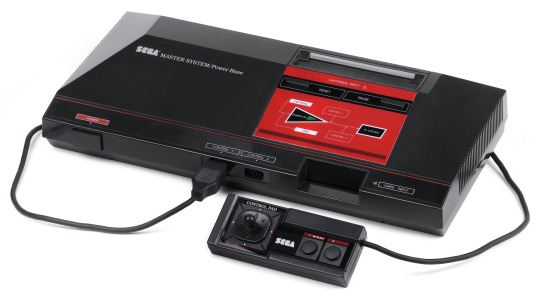
Then there was the Sega Master System, another 8-bit console from Sega. It is essentially a souped-up Sega Mark III, which was a third revision of the SG-1000. The Master System was released globally and is much more well known as the “first” Sega console because of that, despite having been the second. Fun fact, the Master System is still being sold to this day in Brazil!
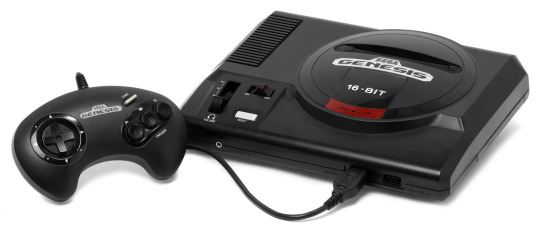
Here it is, the console that briefly beat Nintendo and put Sega on top of the video game industry, the Sega Genesis. The Genesis was far more popular than any Sega console ever released globally, and was especially popular in the US. The Genesis was also home to Sonic the Hedgehog, who would become Sega’s mascot and propel the company from being a relatively successful video game company to being a household name across the globe. Technically an 8-bit version of Sonic was also on the Master System, but obviously the main event is the 16-bit game designed for the Genesis.

This is the Sega CD, a pretty well known add on for the Sega Genesis. With this add on and the Genesis itself, you could play Sonic CD, which is the game it’s easily most well known for. The Sega CD was Sega’s first disc based system, and because of that it was capable of playing much higher quality video and audio than the Genesis on its own.

This is the Genesis 32X, the other major Sega Genesis add on. The 32X is lesser known than the Sega CD, and with good reason as the system had few titles and was essentially rendered obsolete by the Sega Saturn shortly after release. Perhaps the most well known 32X game is Knuckles’ Chaotix, a spin-off of the Sonic the Hedgehog games.
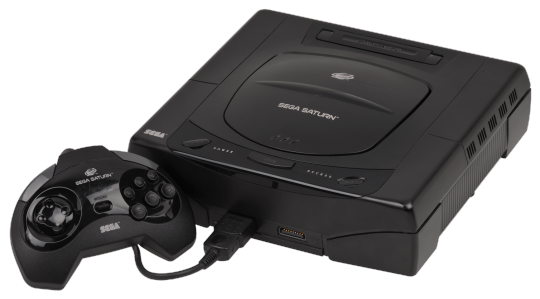
Here’s the aforementioned Sega Saturn. The Sega Saturn was Sega’s most popular console in Japan despite selling quite poorly globally, especially when considering the astronomical success of its predecessor. A big part of the success in Japan was a strong launch with Virtua Fighter, a game that sold almost as many copies as the Saturn did consoles at launch. The Saturn was Sega’s 32-bit console, however of course the 32X having been a 32-bit system lessens the Saturn’s impact in that regard. The Saturn is considered by most to be the console that killed Sega’s hardware business despite not being their final home console due to the fact that the Dreamcast was a console much better positioned to succeed that most likely would have if Sega had not lost consumer trust and interest to Sony with their PlayStation. Any assessment of the Saturn’s popularity is unfair without mentioning the PlayStation. Sony created a console that had far greater third-party support than the Saturn, with games like Final Fantasy 7 being PlayStation exclusive. The Saturn also lacked a mainline Sonic title, having only spin-offs like Sonic R and the collection of the Genesis titles, Sonic Jam. This greatly lessened interest in the console for American players, as Sonic has always been most popular in the West.

This is it. The Sega Dreamcast. Sega’s last true video game console. The 128-bit monster. The Dreamcast was marketed as the ultimate gaming system, and it certainly was when it released. The Dreamcast was by far the most powerful gaming console ever released at the time, and it was a very impressive console. The Dreamcast was affordable and yet incredibly powerful, and it launched in the US on 9.9.99 which was a massive part of its marketing campaign. Major issues with the Dreamcast had nothing to do with it, rather the company that manufactured it, as well as its predecessor. Sega had lost consumer trust with many when they saw how quickly Sega abandoned the 32X for the Saturn, and many had purchased the PlayStation over the Saturn when the time came to upgrade to the next generation consoles. The PlayStation was incredibly successful and its massive install base was very excited for the PlayStation 2. Even with the power of the Dreamcast, and a quality launch lineup of games (in the US at least, as Japan’s launch lineup wasn’t as strong) including Sonic Adventure, the first true 3D Sonic game ever made and an absolute classic, the Dreamcast failed to capture as much interest as the PlayStation 2 did. The console lived in the shadow of a console that had yet to be released. The Dreamcast did do well for its short life before the release of the ps2. The Dreamcast didn’t sell as well as the Saturn in Japan, but absolutely sold far better than the Saturn in the United States. However, once the PlayStation 2 released, Dreamcast sales plummeted. Sega’s Dreamcast had the power and quality games to have been a runaway success, but the stain that the 32X and Saturn left on the company as well as the meteoric popularity of the PlayStation had killed any chance the Dreamcast had to succeed in the way it perhaps should have. Sonic Adventure 2 was in a sense a swan song for the Dreamcast and Sega’s time as a console giant, rather than a monument to the system’s success.

Sega returned to the console business in 2019, but not fully. This is the Sega Genesis Mini, a miniature game console manufactured by Sega with Genesis game ports by M2. The Genesis Mini followed the success of the NES Classic by Nintendo, and Sega followed suit with their Genesis Mini to great success. The mini console was quite popular and sold well, just like the console it was built to resemble. The Genesis Mini has high resolution visuals, outputting through HDMI cables, making it perfect for use on modern televisions. The console’s sound also replicates the Genesis quite well. The Genesis Mini was released with a number of toy accessories such as a Sega CD replica.

Lastly, this is the Sega Genesis Mini 2. The Genesis Mini 2 is modeled after the Genesis Model 2, a revision of the Genesis. The Genesis Mini 2 is capable of playing Sega CD games in addition to a brand new lineup of Genesis games. It released earlier this year, and so I can’t tell you how well it’s done. It’s definitely a more niche console than the first mini, and it was only sold as an Amazon exclusive here in the US, so it’s safe to say it won’t sell as well as the first Genesis Mini. However, the console is just as nice as the first mini. The Genesis Mini 2 features a six button controller as well. The system, like its predecessor, released with a number of toy accessories.

Well, that’s that! Those were all of Sega’s major consoles, add ons, and mini consoles. I don’t know about you, but I certainly hope to see more mini consoles in the future! I’m particularly excited about the prospect of a Sega Dreamcast Mini releasing for the Dreamcast’s upcoming 25th anniversary. I also dream of seeing Sega one day truly return to the console market, but I know it’s a long shot. Thanks for reading if you made it this far, I hope I was able to educate you a bit on Sega’s history as a console developer!
#sega#sega consoles#sg 1000#sega master system#sega genesis#sega cd#32x#sega saturn#sega dreamcast#sega genesis mini#sega genesis mini 2#sonic#sonic the hedgehog#sth#sonic cd#virtua fighter#nintendo#sony#playstation#playstation 2#final fantasy 7#sonic r#sonic racing#sonic jam#sonic adventure#sonic adventure 2#video games#video game consoles#video game history#history
26 notes
·
View notes
Text
HOW GOOD IS YOUR MEMORY?
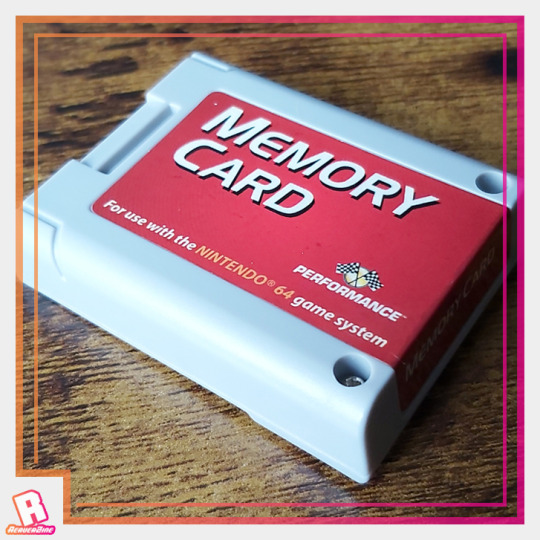
If you owned a memory card for your Nintendo 64 chances are you had a Performance, a sub-brand of InterAct Accessories, Memory Card, as seen above. These are one of the most common third party memory cards made for the n64.
InterAct Accessories made dozens of types and styles of memory cards for the Nintendo 64. Their 'tall' Performance Memory Card being the most common when it came to a Nintendo 64 owner needing a memory card, or Controller Pak as Nintendo marketed their own.
Performance n64 Memory Cards often boasted larger storage capacities than the official Nintendo Controller Paks, allowing players to store more game saves and data. Performance Memory Cards offered up to 1 megabit (128 kilobytes) or even 4 megabits (512 kilobytes) of storage and more, namely in their 'Plus', 'Mega', and 'Massive' branded memory cards.
In addition to increased storage capacity, some Performance Memory Cards included additional features like built-in cheats or the ability to transfer saves between different memory cards. These features offered convenience and expanded functionality to n64 players.
It's important to note that while Performance Memory Cards offered benefits such as increased storage and additional features, their compatibility with all n64 games was not guaranteed. Some games might not recognize or work properly with third-party memory cards, leading to potential compatibility issues. It was advisable for players to check the compatibility of Performance Memory Cards with specific games before purchasing or using them.
Performance Nintendo 64 Memory Cards were a popular choice among n64 players who desired more storage capacity or extra features beyond what the standard Nintendo Controller Paks offered.
4 notes
·
View notes
Text
Staff Picks: First Game Ever Played
Here is a collection of some of the @RealWomenGaming
staff's first games they remember playing, compiled by @ThiatheBard
#Nintendo #BoardGames #MagicTheGathering #retrogames
Our staff love a plethora of games. Most of us have been lucky enough to be playing at least some kind of games since we were young. Here are some of the first games ever played by our staff members!
Henry started us off strong with Pools of Radiance on the Commodore 128. “I loved it and it helped push my love of TTRPG based games.”
Salty had a video game in mind with Donkey Kong Country. “I…
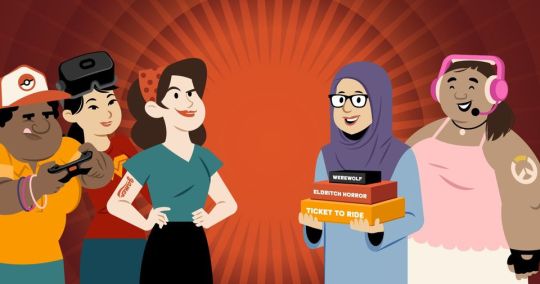
View On WordPress
#Card Games#family games#first game#Games#Gaming#Real Women of Gaming#ttrpgs#Video Games#Women in Gaming
4 notes
·
View notes
Text
youtube
Welcome to the Fantasy Zone! Get Ready! in this full gameplay, longplay, playthrough, walkthrough, guide and trueplay of both modes seen in the Nintendo Switch release from 2019. The SEGA arcade game Space Harrier / スペースハリアー is truly an iconic game from 1985 and one that well deserves it's place in gaming history. Developed by the little known Studio 128 team at SEGA, they would later become better known as SEGA AM2.
We haven't covered the game to date on Randomised Gaming and it was time we corrected that with a look at the excellent 2019 arcade port from M2 which includes a wealth of new modes and features. Including wide screen support, Komainu Barrier Attack, Online Ranking and the extra boss Haya-Oh originally created for the home versions.
Follow Randomised Gaming on Tumblr, for video game, art, reviews, features, videos and more. You can also find us on YouTube, Twitch & Twitter for even more gaming & video content! Buy us a tea on Ko-fi
2 notes
·
View notes
Text
Every Mario Featured In Project 128 (PART 1)


#1
Just plain old Mario
Source: Super Mario


#2
Jumpman
Source: Donkey Kong (Arcade)

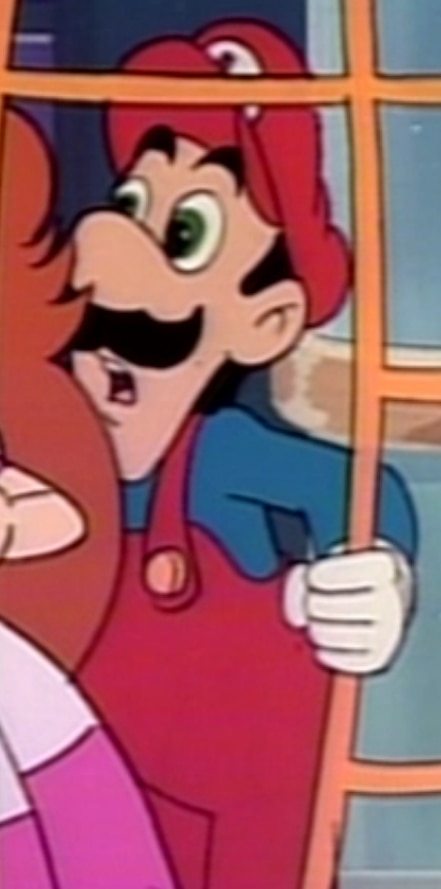
#3
Red Luigi
Source: Didn't have a specific one when I made it, but I guess it counts as a reference to the DIC cartoons.


#4
Soldier Mario
Source: Mario's Bombs Away
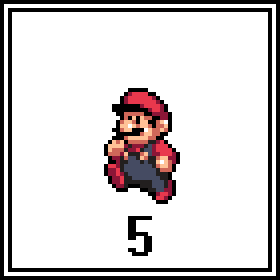

#5
Mario, but now with black overalls.
Source: Super Mario Bros. 3 (NES)


#6
Mario, again.
Source: Super Mario Bros. (NES)
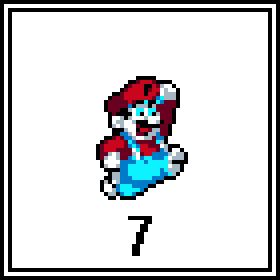

#7
Fortran
Source: Dian Shi Ma Li/Big TV Mary Bar
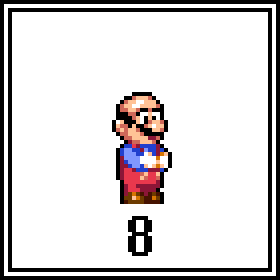

#8
Bald Mario
Source: Ace Novelty Mario Clip On Figure
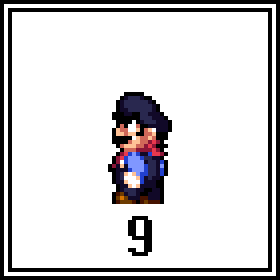

#9
Mario?
Source: NEW! Mr. Pence
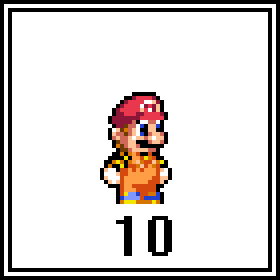

#10
Prisoner Mario
Source: Some bootleg Mario plush
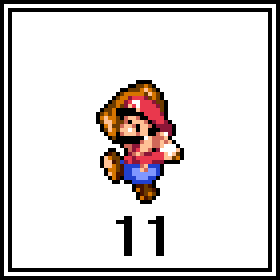
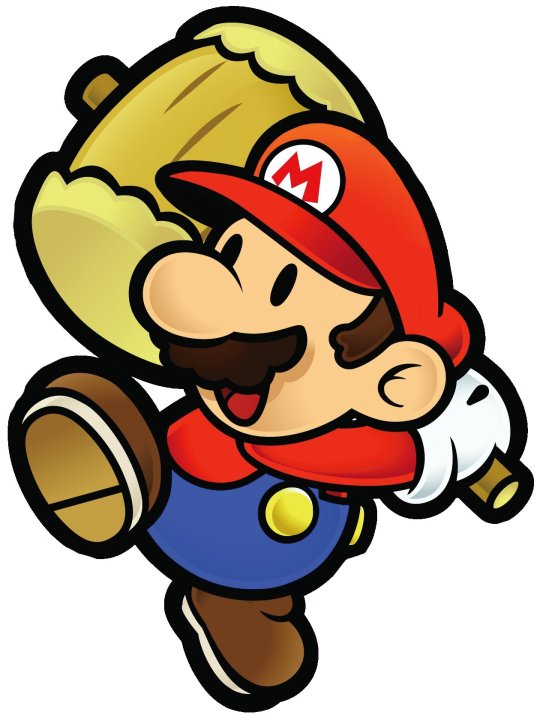
#11
Paper Mario
Source: Paper Mario (the series)

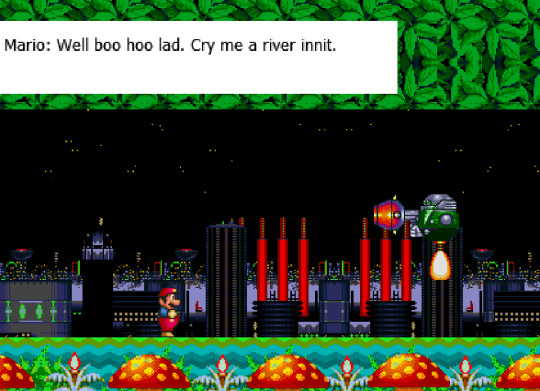
#12
British Mario
Source: British Mario VS I. M. Meen (slightly redesigned here)
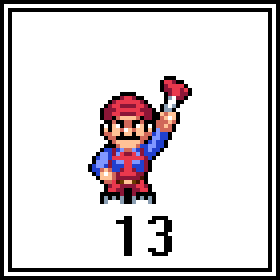

#13
Bob Hoskins Mario
Source: Super Mario Bros. (1993 Film)

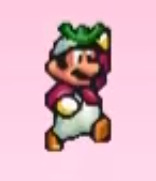
#14
Beetroot Mario
Source: Super Mario Forever
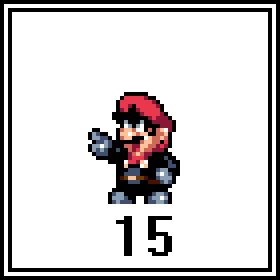

#15
Mr. M
Source: The Mario fandom?
Part 2 of the list will be done tomorrow.
12 notes
·
View notes
Text
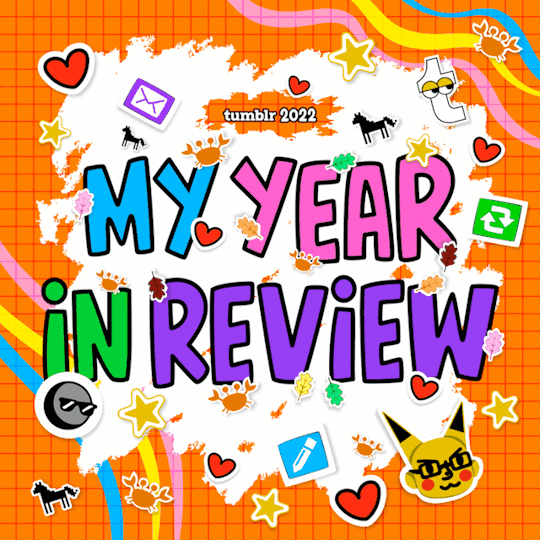
I posted 156 times in 2022
126 posts created (81%)
30 posts reblogged (19%)
I tagged 156 of my posts in 2022
#sims 2 gameplay - 41 posts
#everlasting uberhood - 41 posts
#sims 2 download - 40 posts
#ask - 33 posts
#sims 2 default - 32 posts
#household:singles - 29 posts
#la fiesta tech - 29 posts
#anon - 22 posts
#reblog - 20 posts
#default:clothes - 19 posts
Longest Tag: 100 characters
#also friendly reminder that if you can handle texture work i'm open to collab with overlay packages!
My Top Posts in 2022:
#5


I’ve shared two EM defaults at GoS! Credit goes to Trapping, @saphyriasims, @deedee-sims and @memento-sims.
124 notes - Posted October 21, 2022
#4
The great @vegan-kaktus made an awesome default replacement for the handheld game with a Nintendo Switch, which I love! I’ve made three two-tone recolours of it, for more variety, based on real joy-con controllers.

That’s it! The default replacement and CEP-extra linked above are required but not included, please read the original post carefully and download the required files if you want these recolours to show up in your game. These are compatible with Cyjon’s buyable electronics in case you’re interested.
Download SFS | Dropbox
128 notes - Posted December 11, 2022
#3

I made these as a present for @itsdiamondeyesuniverse, but she said you all should have them as well 😊. They’re 25 textures by NELL, pasted on this mesh. If you haven’t used accessory stockings before, please read this post. This will work only with clothes that use Maxis naked legs and have higher than ankle shoes. There’s more info on the post linked before, and there you can find also a list of clothes that work with this acc. You can also check the tag on this blog for stockings-friendly stuff. This is for AF and TF, everyday only, no morphs, and includes a new mannequin-box (located in the dressers category for 45$). Mesh by Diamond Eyes is included, but you don’t need it if you already have the one we shared before.
Download SFS | Dropbox
Credit goes to @nell-le (thank you Elena for your generous policy!) for the textures; DEU for the stockings mesh; and @deedee-sims and DEU (again) for the mannequin mesh. I was too lazy to make a swatch this time but I’ve uploaded my edit of the textures here, in case you want to take a look or use them for clothing-making purposes (pssst @rudhira 🤭).
We’ve also decided to upload the mesh edits Diamond Eyes made of two of my favourite skirts (Amaryll’s Wrap Skirts with Pixicat Docs by @yandereplumsim, second skirt on the first preview, and Io’s Flipper Skirt with Lace Up Boots, third skirt on the second preview) to be stockings-friendly! These are just the meshes, you’ll need to download the recolours from the links above.
Download stockings-friendly skirts: SFS | Dropbox
Enjoy! And as always, let me know if you have any problems.
135 notes - Posted January 30, 2022
#2

Another weird overlay box no one asked for! This time with prosthetic arms and legs in a cybor-like style. For teens to elders, both genders, including supernaturals. Textures are from this servo default by @criquette-was-here, edited by @episims and @andrevasims. Arms come in two flavours: brand new and worn out. There are no “worn out” legs, because the textures were too difficult to adjust to the sims’ bodies. And sadly, prosthetic legs will look weird on elder females (as shown here), because their ankles’ mapping is really cursed (sorry about that).
These overlays have very high priority and layer, meaning they should go over any other overlay (explained here). The overlay box is a set of wrenches from this set by Sandy (*cough* also found here for free *cough*), located in Misc/Dressers for 22§.
Download SFS | Dropbox
Credit goes to Criquette, Andreva and Epi. As usual, I only did the copy-pasting in SimPE 😁
Sidenote: If you prefer shiny textures, I recommend trying this overlay box by ja-viera. You can see the arm texture here.
249 notes - Posted July 21, 2022
My #1 post of 2022

Another overlay box, this time with navel piercings! This is something I’ve made for @cobycobsy2k. Ten colours, for TF-EF. I got the textures from here, but after being resized to 7 pixels wide they’re barely recognizable anymore. You can see a close-up here.
The box is a piercing display I’ve stolen from @deedee-sims, found in Misc/Dressers for 23§. I tried to make it placeable on counters but kept getting “bad gosub tree number” errors. Sorry about that. At least you can use it with OMSPs!
That’s it. Enjoy, and let me know if you have any problems! Thanks to @cobycobsy2k and @coriel-muroz for their feedback and encouragement 🥰
Download (SFS) | Dropbox
301 notes - Posted April 15, 2022
Get your Tumblr 2022 Year in Review →
9 notes
·
View notes
Text
pretty impressive stuff nintendo. now release super mario 128.
6 notes
·
View notes
Text
MissingNo. (Japanese: けつばん[1], Hepburn: Ketsuban), short for "Missing Number" and sometimes spelled without the period, is an unofficial Pokémon species found in the video games Pokémon Red and Blue. Due to the programming of certain in-game events, players can encounter MissingNo. via a glitch. It is noted as one of the most famous video game glitches of all time.
Encountering MissingNo. causes graphical anomalies and changes gameplay by increasing the number of items in the sixth entry of the player's inventory by 128. This beneficial effect resulted in the glitch's coverage by strategy guides and game magazines, while game publisher Nintendo warned that encountering the glitch may corrupt players' game data. IGN noted MissingNo.'s appearance in Pokémon Red and Blue was one of the most famous video game glitches and commented on its role in increasing the series' popularity. Fans have attempted to rationalize and incorporate MissingNo. as part of the games' canon as an actual in-game character, and sociologists have studied its impact on both players and gaming culture as a whole.
Developed by Game Freak and published by Nintendo, the Pokémon series began in Japan in 1996 with the release of the Pokémon Red and Blue video games for the Game Boy. In these games, the player assumes the role of a Pokémon Trainer whose goal is to capture and train creatures called Pokémon. Players use the creatures' special abilities to combat other Pokémon, and certain abilities also grant new ways to navigate the game's world, such as instantaneous travel between two areas. The ultimate goal of the games is to complete the entries in the Pokémon index (Pokédex), a comprehensive Pokémon encyclopedia, by capturing, evolving, and trading to obtain creatures from all 151 Pokémon species.
MissingNo. is not one of the official Pokémon species that players are meant to encounter, but it is accessible to players of European and North American copies of the games by a glitch. Nintendo of America first documented the events that cause MissingNo. to appear in the May 1999 issue of Nintendo Power. The company warned that "any contact with it (even if you don't catch it) could easily erase your game file or disrupt your graphics". Game developers did not remove several glitches from the 2016 re-releases of Pokémon Red and Blue on the Nintendo 3DS Virtual Console, and players can encounter MissingNo. in these versions of the games.
A player can encounter a MissingNo. in Pokémon Red and Blue by following a series of steps. First, the player watches an in-game tutorial for Pokémon capture in the game's Viridian City location. Second, the player uses a Pokémon with the "Fly" ability to instantly travel to the game's Cinnabar Island location. Finally, the player uses a Pokémon with the "Surf" ability to travel up and down the eastern shore of the island until a MissingNo. appears.
These events manipulate the game's random encounter system to generate a Pokémon with an invalid identifier. Each area within the game assigns values to a data buffer to represent the Pokémon that can be encountered in that area. However, some areas—such as Cinnabar Island—do not overwrite the data in this buffer, so the data from the previous area is used instead. During the Viridian City in-game tutorial, the player character's name is temporarily overridden to read "OLD MAN", and the player character's actual name is temporarily copied to that same data buffer. If the player travels directly to Cinnabar Island after viewing this tutorial, the player character's name will be read as the Pokémon that can be randomly encountered in that area. Due to the player character's name not being intended to be read as this kind of data, the game can attempt to generate an encounter with a Pokémon with an invalid identifier, such as MissingNo. Fans have dubbed this method of encountering MissingNo. the "old man glitch".
As with any wild Pokémon, players may flee from, fight, or capture MissingNo. After an encounter with MissingNo., the quantity of the sixth item in the player's inventory is increased by 128, and the game's Hall of Fame Pokémon gallery becomes glitched. Temporary graphical glitches may also occur, which can be removed by viewing the statistics page for another non-glitched Pokémon or resetting the console.
A captured MissingNo. is functional as a Pokémon and appears in the games' Pokédex as number 000. The games classify it as a hybrid Bird/Normal-type Pokémon even though the category of Bird-type Pokémon was cut from the games before release. It commonly appears with a scrambled block-like form commonly described as a "backward L-shape", but depending on the player character's name, it can also appear as one of three ghost or fossil not used by other Pokémon.
Calling MissingNo. a "programming quirk", Nintendo warned against encountering it, saying players could possibly have to restart the game from the beginning to remove the graphical glitches. Despite Nintendo's warning, information on how to encounter MissingNo. was printed in several magazines and player's guides due to its perceived positive effect. Certain players attempted to sell tips on capturing MissingNo. for up to $200.
Despite it not being an intentional part of the game, in 2009, IGN included MissingNo. in its list of the top video game Easter eggs, citing its usefulness in replicating the game's rarer items and in a later article, calling it an "unforgettable" glitch that helped push the original games to "gaming super stardom". The book 100 Greatest Video Game Characters describes MissingNo. as an example of a player-produced character and counterplay, adding, "as a cultural artifact, MissingNo. celebrates the creativity of deviant and subversive forms of play". Some fans have even created costumes based on MissingNo.
A 2007 paper, co-authored by sociologist William Sims Bainbridge and his daughter Wilma Bainbridge, then a cognitive science student, refers to MissingNo. as "one of the most popular glitches ever in game history". In a 2019 comment provided to Ars Technica, Wilma Bainbridge, then a post-doctoral fellow at the National Institute of Mental Health, expressed her belief that MissingNo. helped contribute to the widespread interest in glitch hunting and speedrunning in video games. Alternatively in the book Pikachu's Global Adventure: The Rise and Fall of Pokémon, professor of education Julian Sefton-Green noticed that in his study of his son's reaction to MissingNo.'s usage as a cheat, the child's outlook towards the game was altered drastically, and added that the presence of such elements, as a result, broke the illusion of the game as an enclosed world and reminded him that "at heart, it is a computer program".
The 2008 book Playing with Videogames discusses how players compare notes on MissingNo. and to assess and critique each other's findings. James Newman, the author, commented that unusually MissingNo. caused players to celebrate the game's imperfections.[28] In a 2017 article, University of Portsmouth professor Lincoln Geraghty examined fan theories that the glitch was a cut Pokémon related to the Pokémon Kangaskhan and Cubone, describing the theory as "an established work of fanon". He further elaborated in a 2019 Ars Technica article that "fans' desire to incorporate MissingNo[.] into the Pokémon world stems partly from a hope that the glitch may have been deliberate", as well as to compensate for the glitch's lack of backstory within Pokémon canon. In the same article, Newman argued that the existence of such fan theories "reveals a belief in the fundamental reality of Pokémon as entities that are given an opportunity to show themselves through the game, rather than being constructed out of code".
The game Vampire Survivors added a playable character named "missingNo." which requires entering an area with visual glitches as part of the steps to unlock it.
5 notes
·
View notes